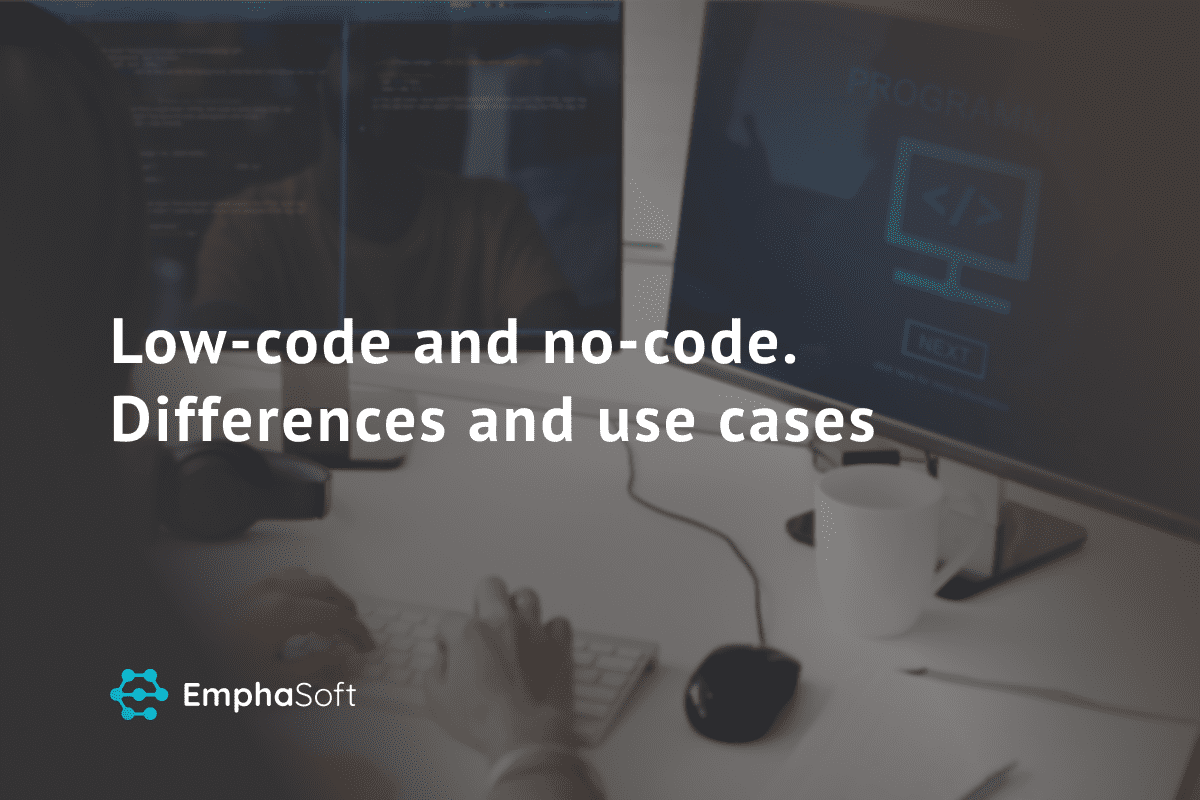Low-code and no-code concepts are on the tip of everyone’s tongues lately. Both promise to free us from having to deal with coding and the more technical side of app development, allowing us to focus on the visuals and user experience.
Although similar, low-code and no-code have their differences and use cases. Today we will help you understand what each platform entails and which one should be used in what circumstances.
What no-code is and when to use it
A no-code platform helps anyone, regardless of how tech-savvy they are, build functional but basic apps.
No-code is visual-based and focuses on productivity enhancement. It is not designed for complex and unique applications, so it comes with its limitations. For example, the nature of no-code apps’ architecture creates scalability issues. Besides, the no-code platform creates many limits for app owners, such as the inability to integrate third-party solutions and difficulties with moving from their cloud to a private one.
Despite all downsides, no-code platforms help create simple apps fast, even if the team’s budget and time are limited. It is a great solution for startups or individuals who don’t have access to an IT team or when there’s no capacity to work on the app in the foreseeable future.
A lesser-known use case for no-code platforms is prototyping the app to then pass it to the technical team. At Emphasoft, we work with many different clients. We know that the most vital part of the app development process is to understand requirements and expectations correctly. Sometimes it’s hard for clients to communicate what they want, so if they have the option to build a draft of the app they wish to end up with, this could save a lot of time and resources down the line.
If you go down the no-code route, be prepared to end up with a rather meager application in terms of quality. There simply aren’t enough functionality or capabilities to make it more powerful. It’s a trade-off.
What low-code is and when to use it
You can think of low-code platforms as an upgraded version of no-code. It allows for more functionality and flexibility, yet it’s still far away from full-on development.
The beauty of low-code is that it can be extremely basic if you want it to be, however, it is also capable of giving you scalable architecture, access to APIs, and a choice of where to deploy your app.On top of that, low-code supports legacy systems modernisation, which means if you possess aging mission-critical solutions, you don’t need to replace them completely, adding risk to business operations. Due to its nature, low-code is preferable for cross-divisional collaboration, because it’s simple to understand for non-tech people but provides enough functionality for developers to work with.
In general, low-code platforms are better for ambitious apps. No-code will do just fine for small apps that one needs for a one-off event or that don't require scalability. Low-code, in turn, creates a background for complex, enterprise-level solutions. Companies that have no resources at the moment but dream big can use low-code as a start and revamp it into something completely different as time goes on.
Low-code is a bit more challenging to business-focused professionals than no-code. If you don’t have any technical background, low-code is still very accessible but will require curiosity and enthusiasm.
The similarities between low-code and no-code
As you’ve seen above, low-code and no-code have many differences, but their global vision is similar:
- Provide visual development approach.
- Facilitate rapid app development.
- No experience with traditional programming required.
Both platforms have endless use cases, but the quality of the outcome will differ. You can use them to build anything: customer portals, scheduling and e-commerce apps, IoT apps, and even CRM or social media apps.
Final thoughts on no-code and low-code
Low-code is perceived as a bit too complex for someone without tech experience, while no-code is seen as too basic to build something of true value to end-users. As you look at which option to go with, make sure you prioritise the app's value.. After all, efficiency and speed of development are great metrics, but they don’t mean anything unless the app does what the business wants it to do and end-users are happy.
Choosing the low-code route seems to be more strategic in the long term. If you have doubts about making the most of a low-code platform, reach out to Emphasoft and we will be happy to guide you and help with all tech elements of the process.
Read next:
Market research: predicting the product’s success
The difference between POC, prototype, and MVP
Prototype development cost and tips to keep it low









 Schedule a Discovery Call
Schedule a Discovery Call Schedule Call
Schedule Call